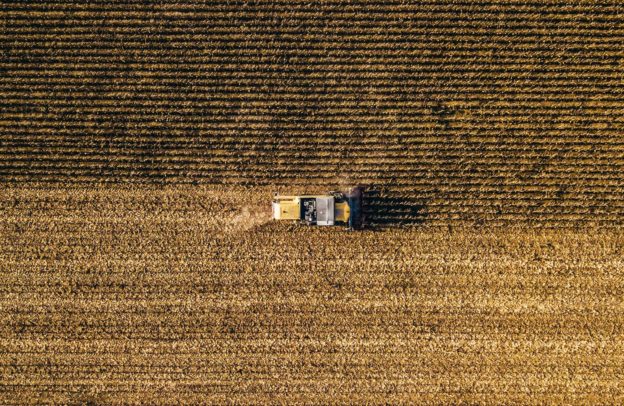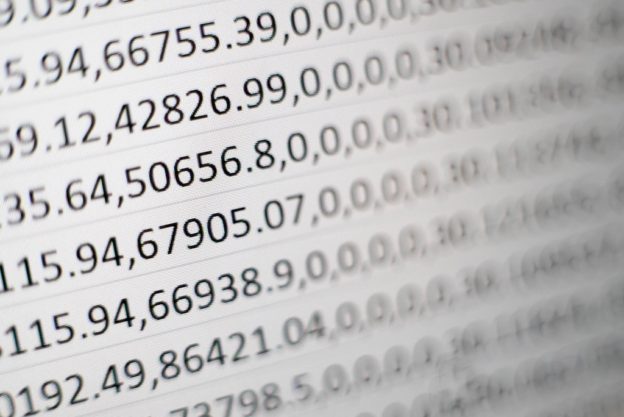In my last three posts I have described Warm Data from a very intellectual perspective. But this is not all there is, and nothing more. There is a whole other world behind the idea of Warm Data. Warm Data is not just a new category to complement cold data or rich data. It is a way to perceive the world. And we all perceive the world in different ways. So Warm Data is something very personal. Yet it is not as much about the individual as it is about the in between. Most of all, it is about being human, about showing up in our whole, complex and messy humanness. Not in some sort of polished, suited appearance of order and control, which only represents a thin layer on the surface, only one particular role that we step in when we are uncertain about what to expect, when we are holding back, connected to a familiar script we can repeat over and over. Warm Data is not about holding back, it is about giving freely and meeting others who also give freely. In the Warm Data Lab Host training, Nora Bateson shared many stories, many very personal stories that touched me (and presumably the others) on a very deep and personal level. Through this, she achieved to stir in us these deep levels of humanness that are needed to then step out of a pre-defined role and not follow a pre-defined and learned script, but to reflect on what is actually going on, inside and outside of myself. What is essential for me now, in this situation, in the contexts that come together here?
Reducing people to roles is also deeply reductionist. Warm Data allows people to step out of their scripted role and talk from their humanness. Or as Nora put it: “When people get out of their roles, they have to start sourcing from their human experience.” This can lead to new textures of communication and certainly to more depth. We need to step out of the limitations of our roles if we want to fully connect with other people and experience the true warmth of Warm Data. If we want to look beyond the structures we are caught in now, first of all we ourselves need to become aware and step out of them.
Understanding Warm Data in this way, it becomes clear that it cannot be captured or controlled. It does not belong to anybody. It is the fertility in the soil that enables new things to grow, and if we tend to that fertility, good things will grow. A good future will grow, in which we will enjoy living without the constant threat of immediate death through violence and war or slow extinction through climate change and other manmade disasters.
How and why does Warm Data resonate with me? A large part of it is that it fits well into my own worldview that I have been building up all the way back to my University studies and probably even before. This world view includes interconnectedness and interdependencies, ecologies and evolution, transdisciplinary or transcontextual thinking (even though the latter is a new word for me), ambiguity and uncertainty, and so on. Warm Data fits well in there. But why I find it to be pulling my sleeve in is also because Warm Data is radical, uncompromising. It is not trying to fit into the old system and change it from within. It is a radical attempt to shape a new space, a way of approaching things in a different way, not just incrementally change the way we live. Of course it recognises that we all live our daily lives in the current reality and that there is a large number of constraints to what we can change and how. Of course it recognises that change is evolutionary, that we cannot just establish a picture of an ideal future and then develop a plan on how to get there. Things need to evolve from where we are now in messy ways. But in our minds, Warm Data attempts to break down constraints and fundamentally rebuild the way many of us see the world. And the interesting part is that this point – changing the way people perceive the world – is also all it wants to achieve. It is not a grand new vision of a new world we need to build up. It is not an ideal future state of the system. It is about perceiving the world in a different way, in a warm, interconnected, ecological, mindful, beautiful way. And then see what happens. It is not a call to action. Because any action will at the moment be captured by the current system, it will have to have an objective and milestones and measures to justify itself, to provide accountability to whomever is paying for it.
As Tyson Yunkaporta writes in his beautiful book Sand Talk:
The most remarkable thing about western civilisation is its ability to absorb any object or idea, alter it, sanitise it, rebrand it and market it. Even ideas that are a threat can be co-opted and put to work. … It’s not a conspiracy; it’s just power doing what power does.
Tyson Yunkaporta, Sand Talk, p. 74
If we can change the way we perceive the world, the way we see it and think about it, an important first step is done. Then something new can emerge, can sprout from and grow in the warm earth of warm data. I find this enticing and liberating at the same time. No more ‘what’s the pathway to achieving systemic change?’ or ‘how do we measure systemic change?’ Whatever grows from a soil of Warm Data is systemic as it is sensitive to what’s there and grows into the contexts, becomes an image of the existing contexts and yet keeps its distinctiveness. Like the white snow fox is a picture of the white snow of the tundra or the stick bug is a picture of the stick of a tree.
I had a bit of an epiphany recently while running. I realised that there is so much noise about change in my life. Cries for change are everywhere. All my work is about change, my reading is about change and my wishes for how things are done around me are about change. Look at the subtitle of my blog! Change change change. My blog feeds and twitter bubble are full of people wanting change, but also about people selling means to achieve change and how to measure change. Adaptive project management, agile, the multi-level perspective, this process and that process … Even myself I’m working on a process (yet somehow maybe intuitively we did not call it a change process, we call it a process of continuous exploration).
So what I realised is this: Change is something that is seen as finite by most. Either they talk about the bad things in the now that we need to change away from or the ideal futures that we need to change towards. But once we are away from the bad situations now, the inequality, poverty, ecological distraction and we have arrived in the ideal future where everybody is treated equally, has food and shelter and is well, change is done. Congratulations! Now we can stop change. Change is seen as linear and finite: from here to there and then that’s done. In addition, many people seem to know how to do it. There is this methodology or that methodology, this tool, framework, approach. If we just followed their approach, change will happen. Change is going in one direction, it has a vector, an arrow of direction and speed. It is rooted in linear time. But what I realised is that this is a trap. This idea of time going only one way, forward, and that a better world lies just around the corner is an illusion. All the solutions and processes that all these well-meaning and caring people suggest are just pushing us further down the same trajectory. All these cries for change are effectively on a very fundamental level just tuning in with all the cries for growth. Today’s problems are yesterday’s solutions. Further! More! Keep moving, when you stop, you die. But why do we believe that today’s solutions won’t be tomorrow’s problems?
From Phoebe Tickell in her incredibly strong piece “The Hall of Mirrors” (read it!):
You’re all going round and round in a weird delusional matrix of social change speak and flourishing and thriving and re-imagining and renewal and all sorts of bullshitspeak (think of it like newspeak in Orwell’s 1984, but for social change). I think you, all of you who have dedicated yourselves to social change, got to this place because you’re in a mass state of dissociation from the trauma of realising that it’s almost impossible to ‘change the world’ on the scale that’s needed, and the timeframes available. You know that. I know that.
Phoebe Tickell, The Hall of Mirrors
What my journey into Warm Data did is that it took the wind out of my sails – and that not in any negative way. But it allowed me to look up from the hamster wheel of trying to achieve change and ask myself where we were actually going with this. If we cry for change but that change is rooted in the growth and exploitation-oriented system then what we get will be growth and exploitation oriented.
What we need now is to slow down and reconnect with our fundamental humanity and with the cosmos, the whole that connects us all with everything around us.
There isn’t much we can do but to generate warmth and care in the community.
Nora Bateson
Featured image by Jonatan Pie on Unsplash






